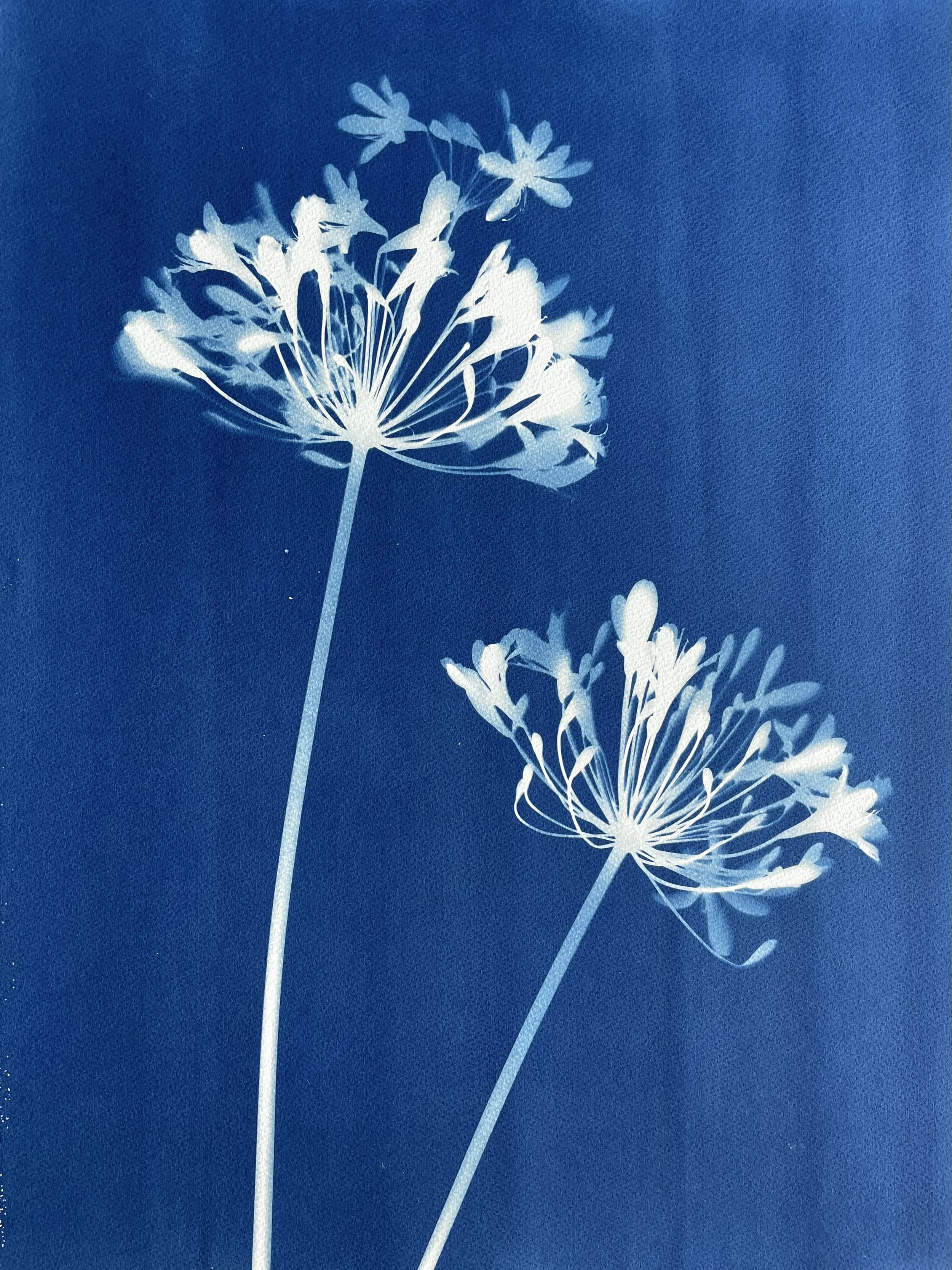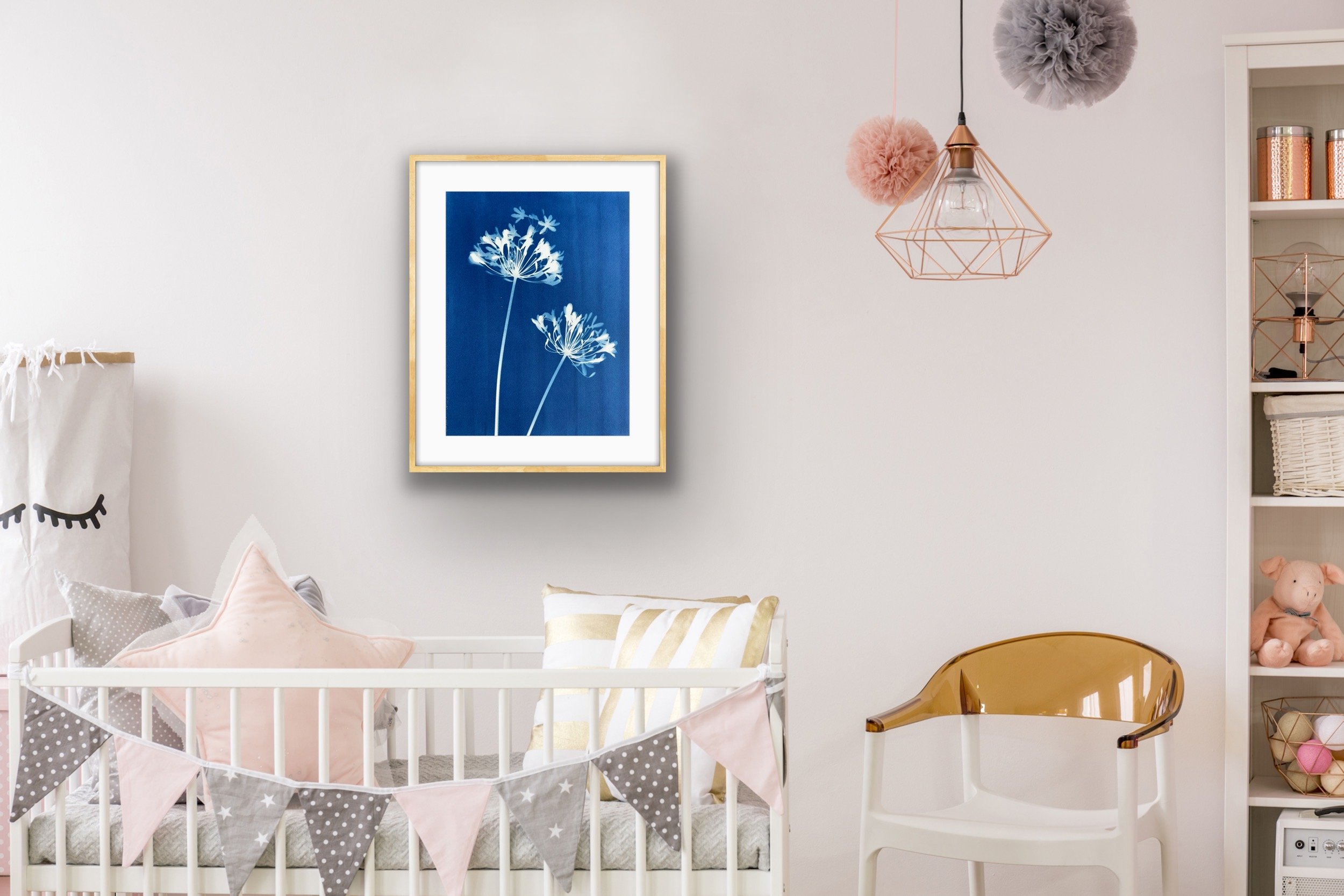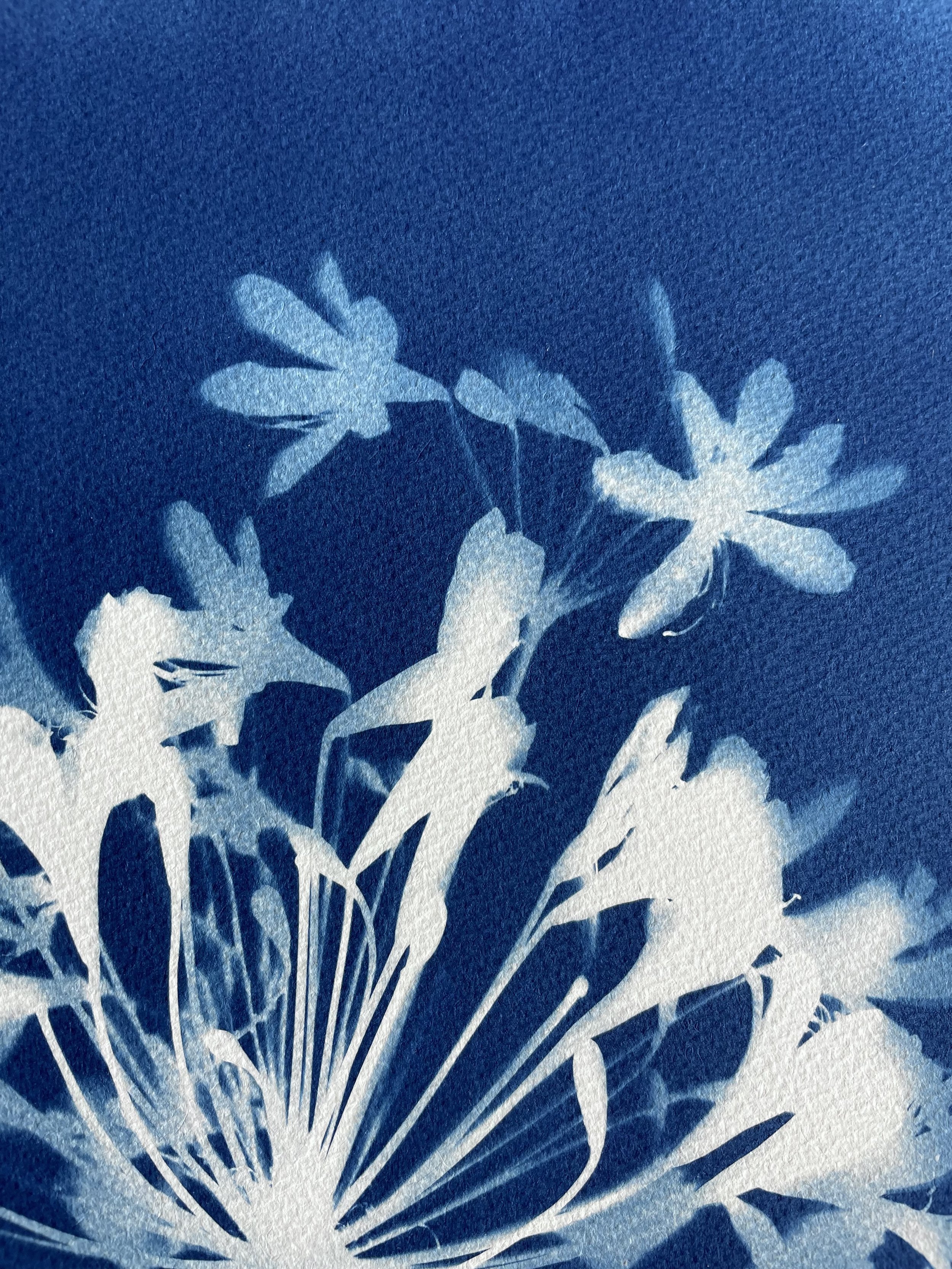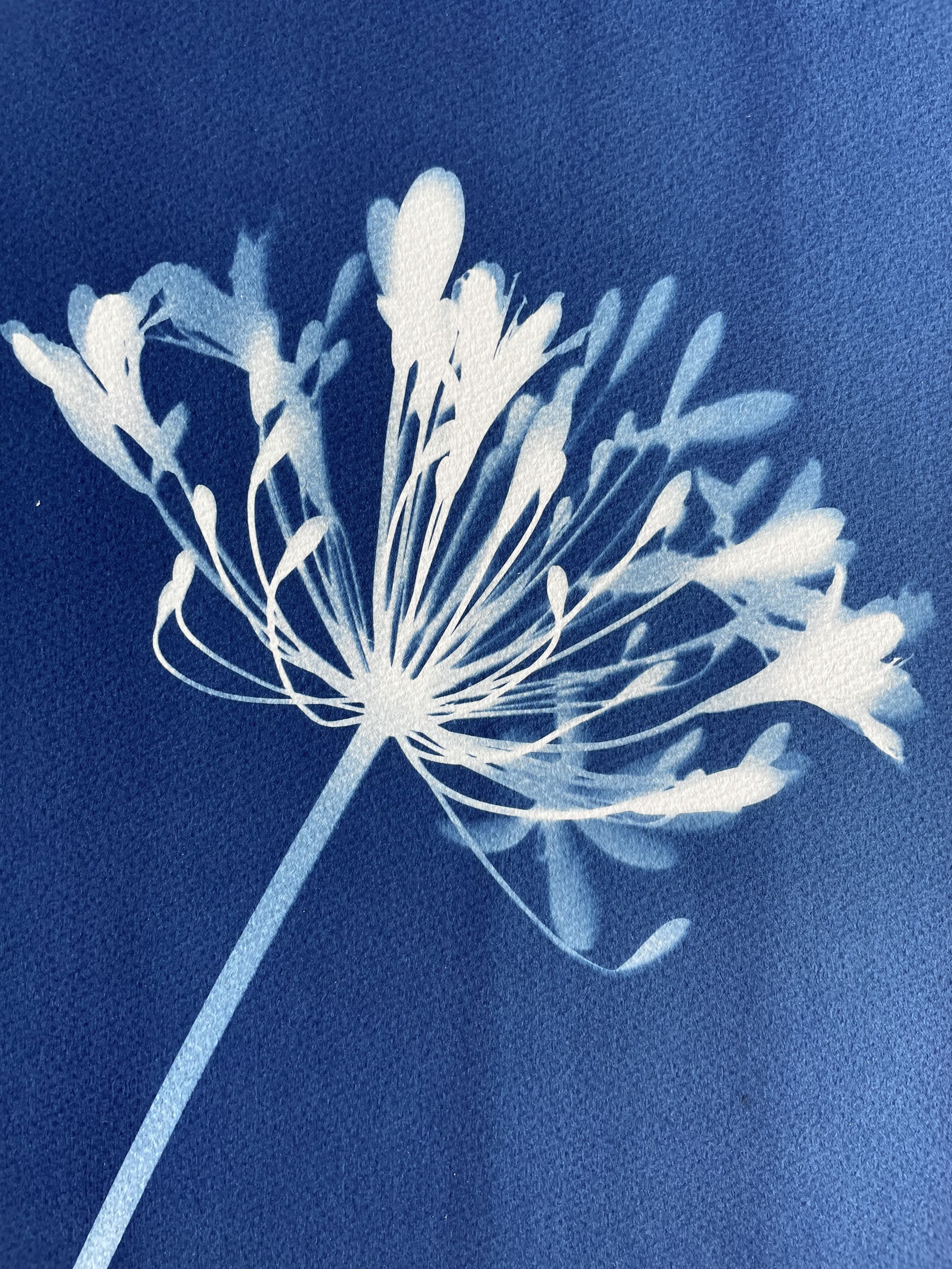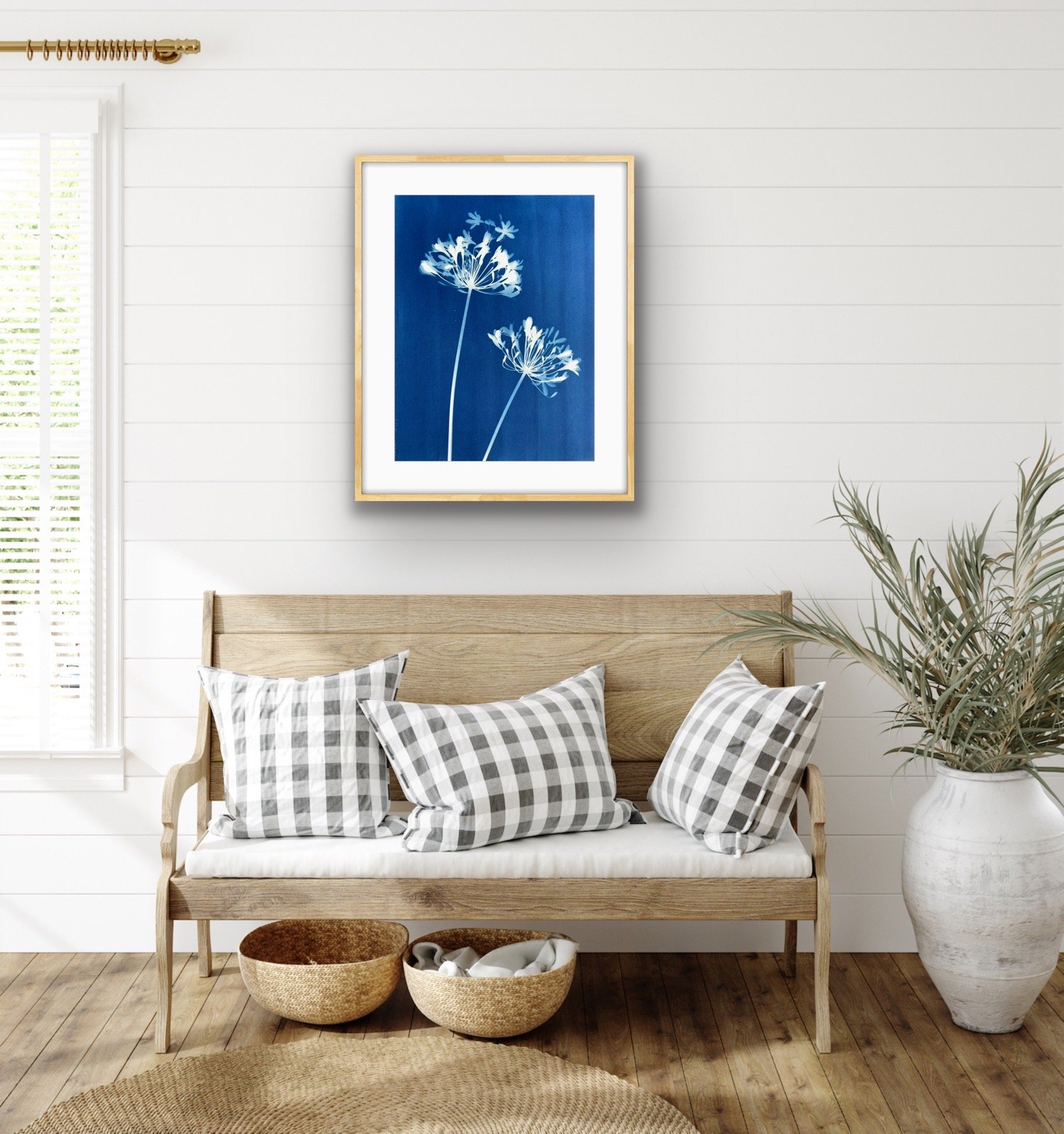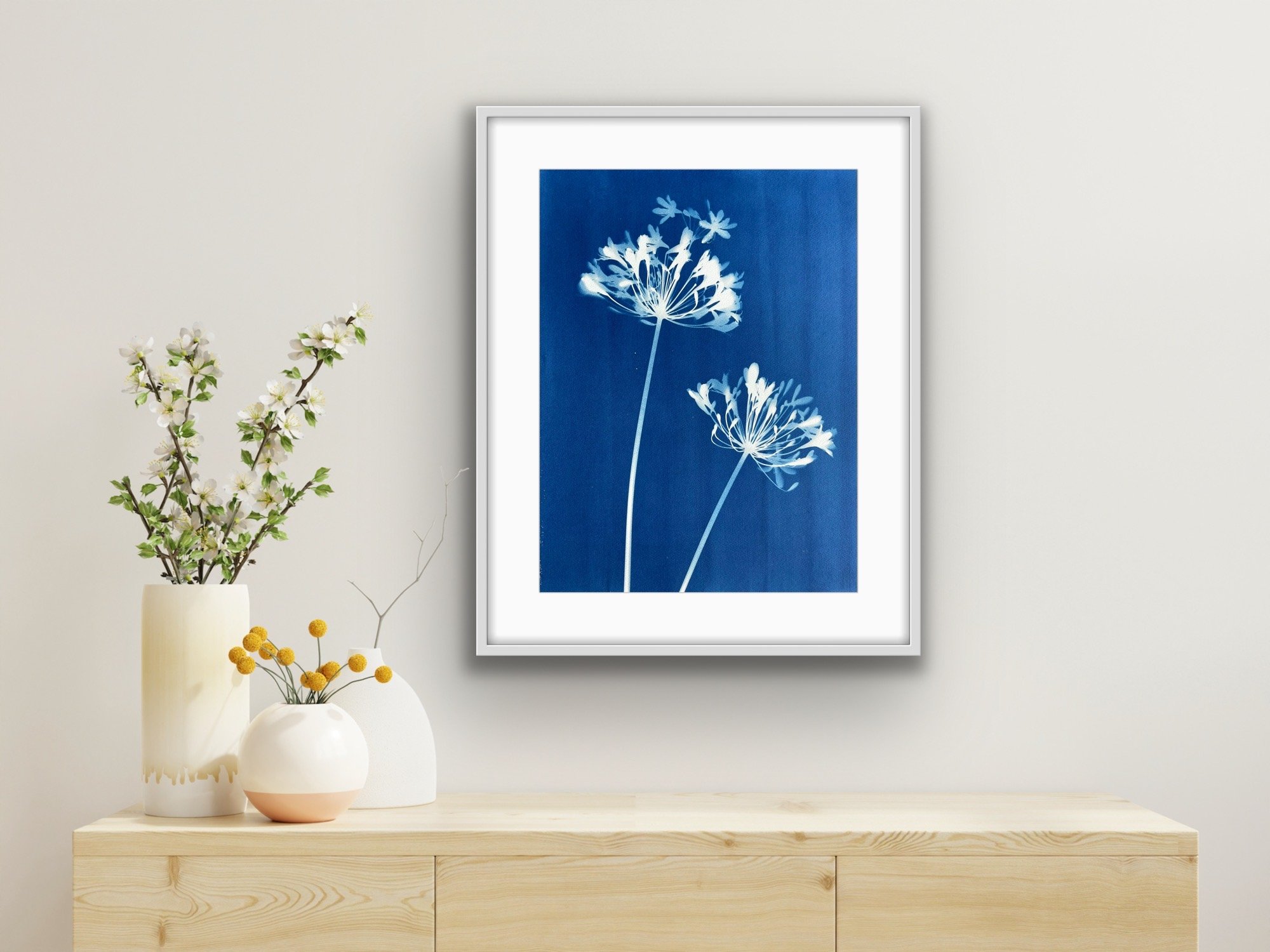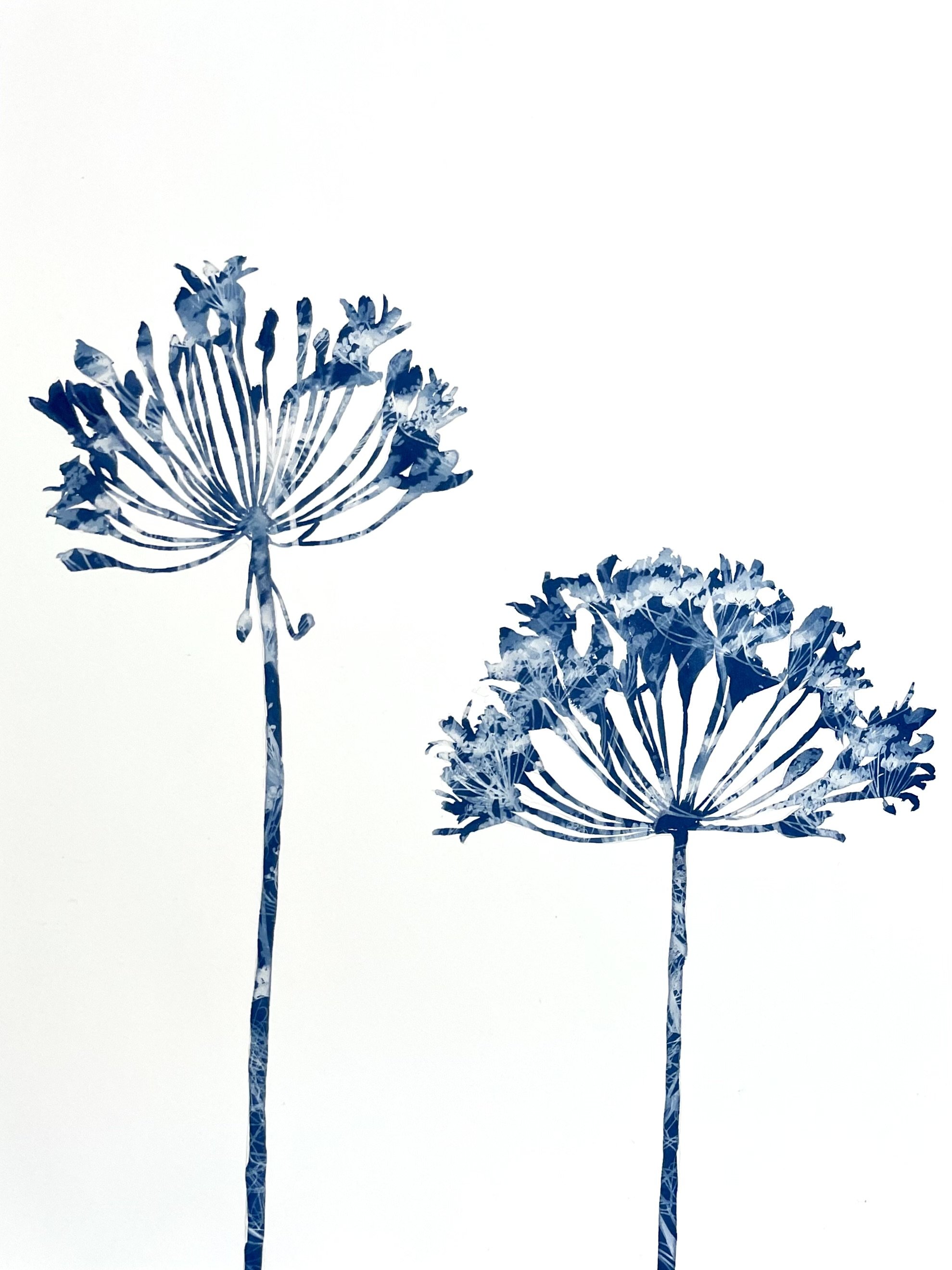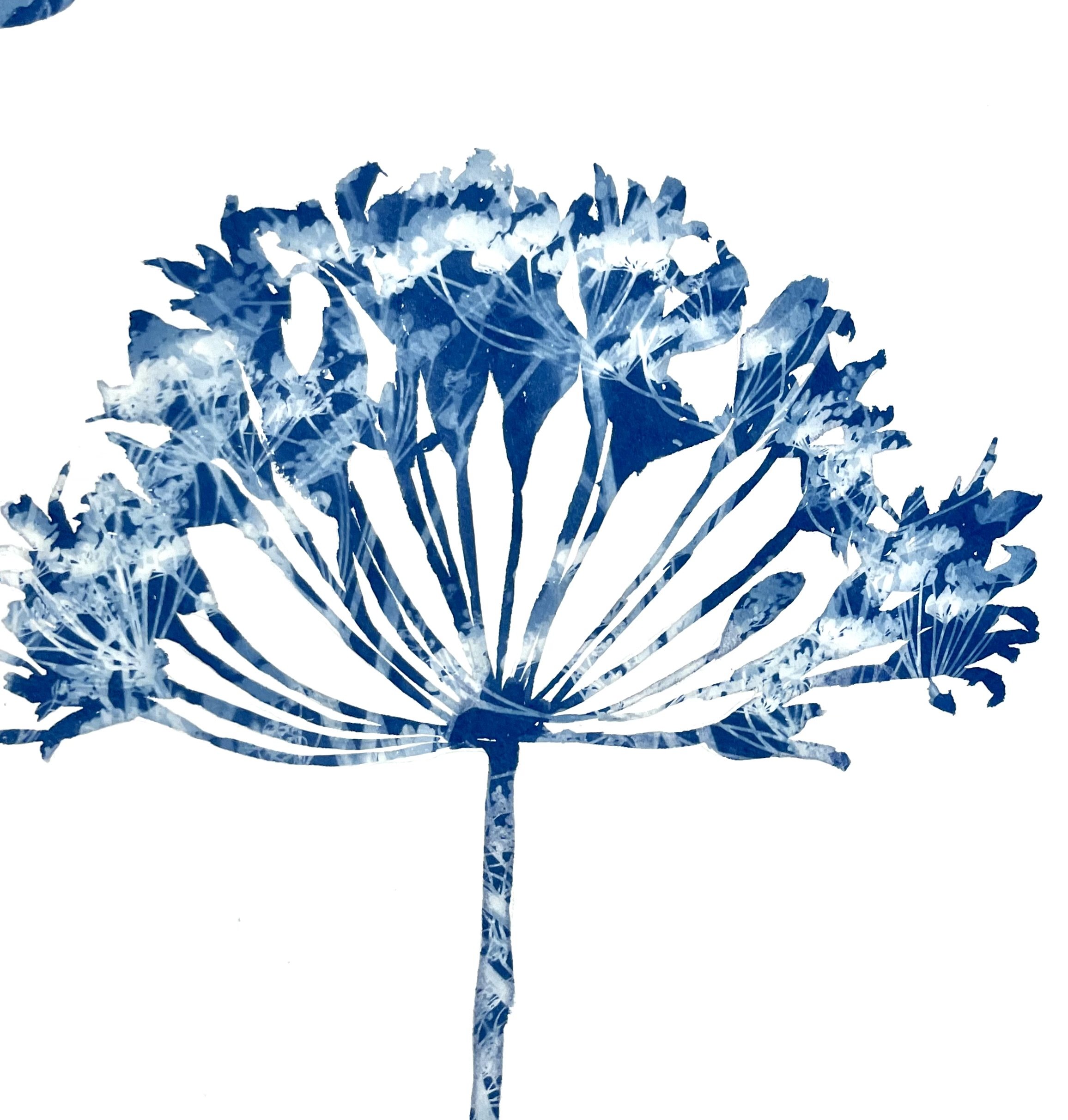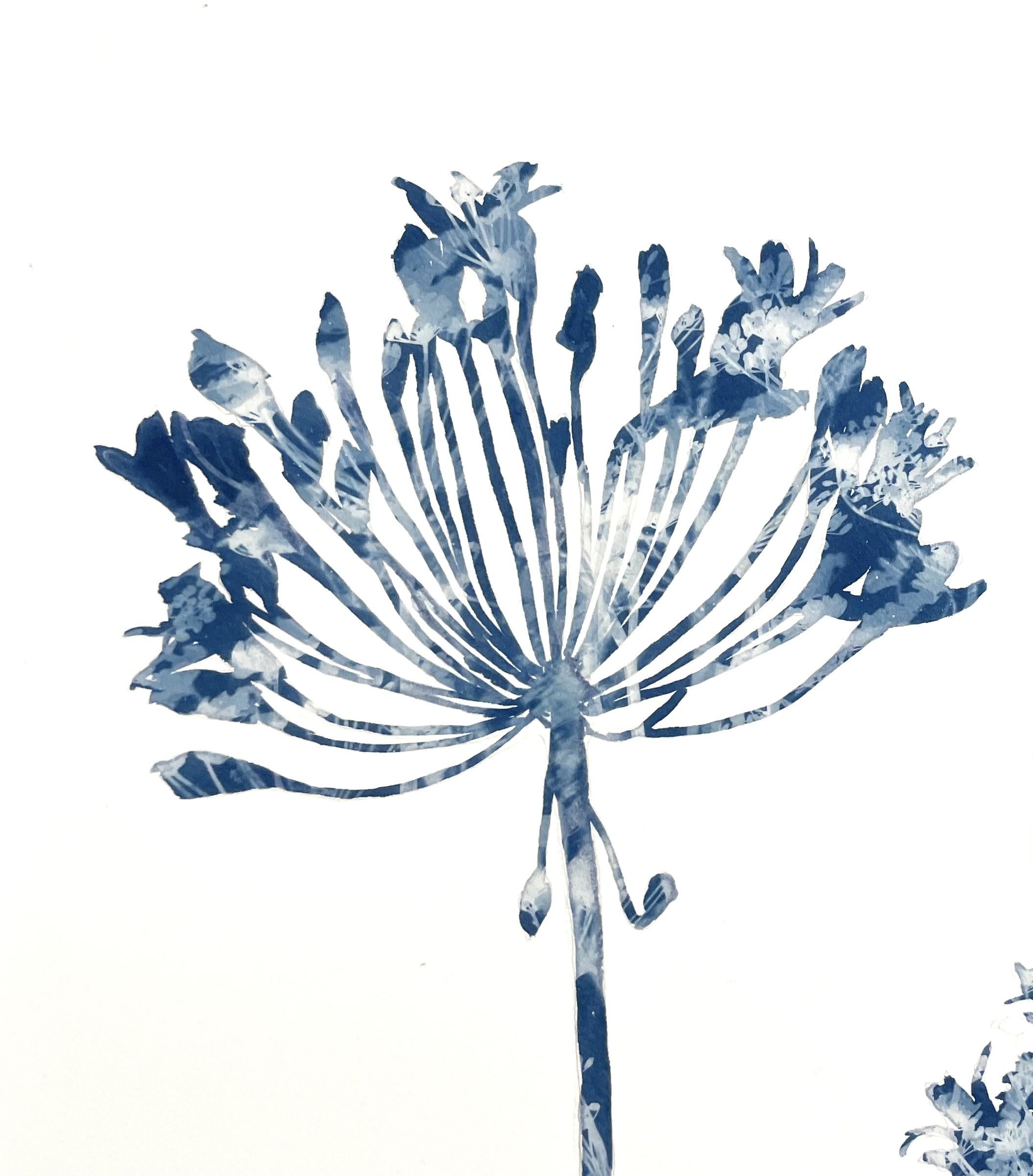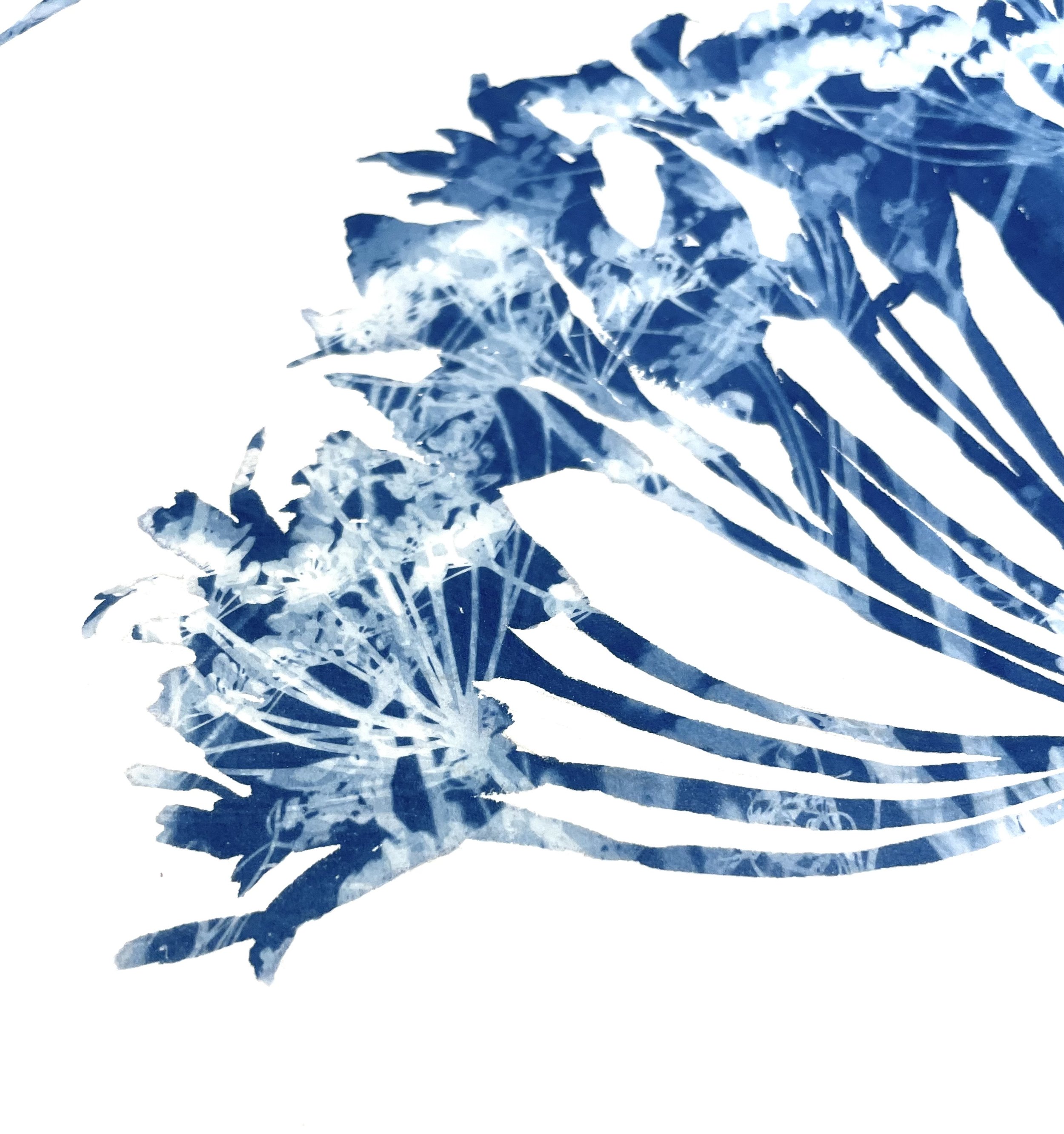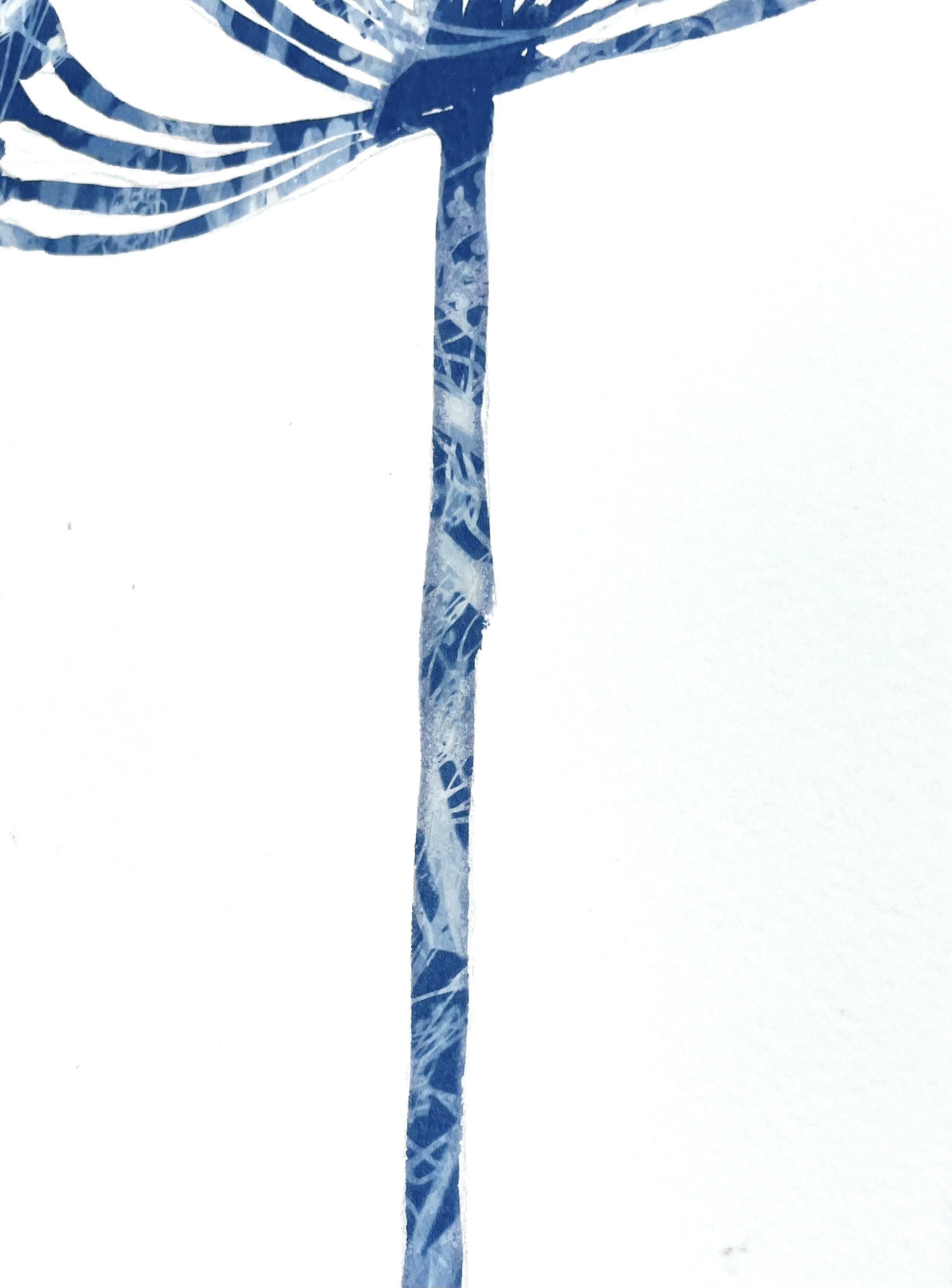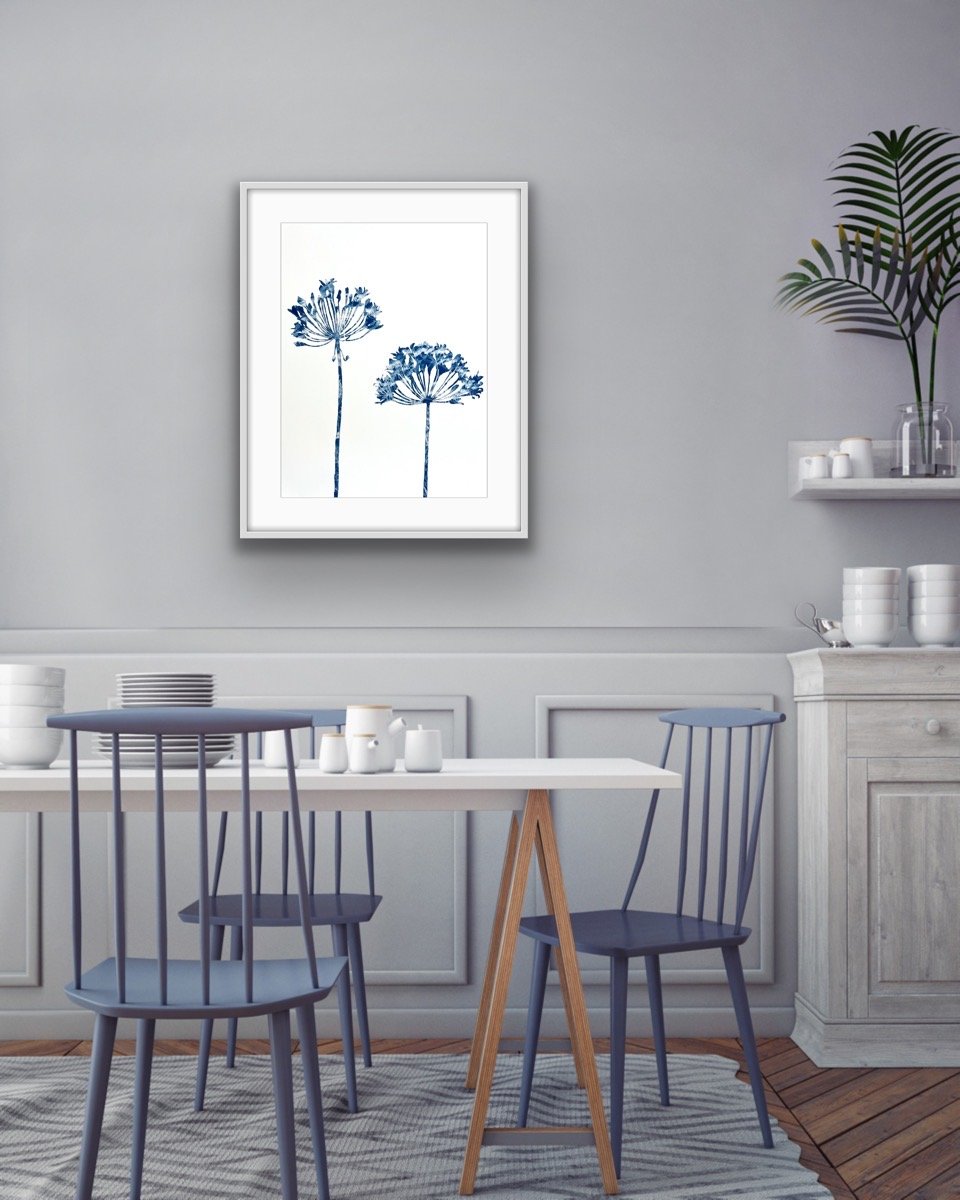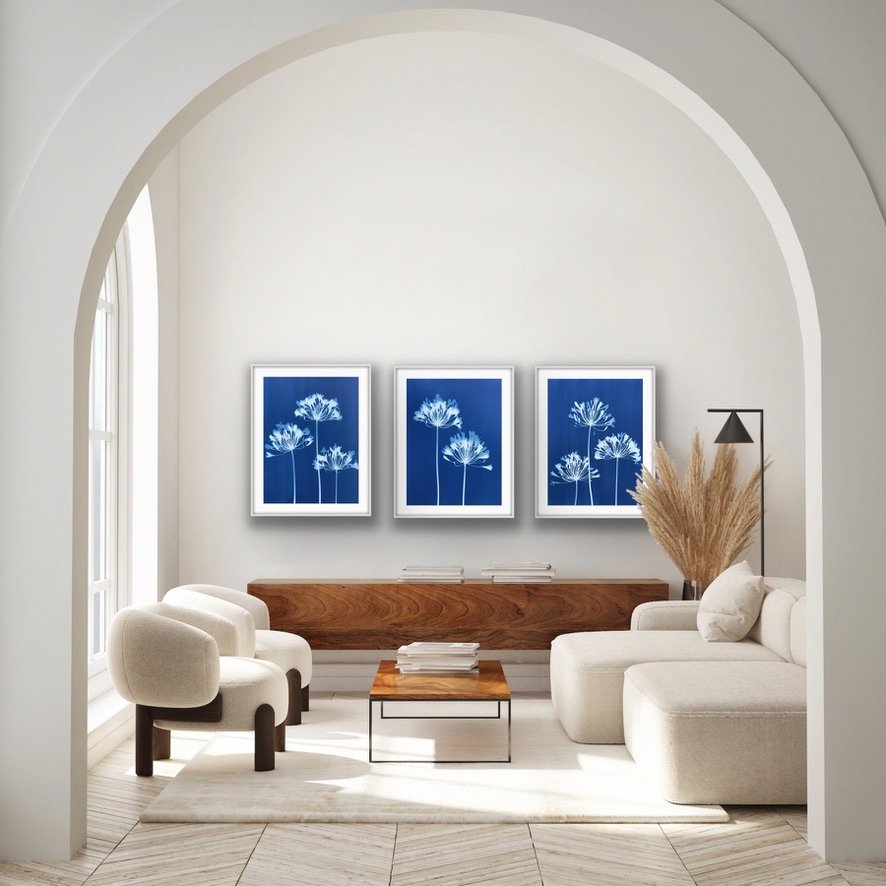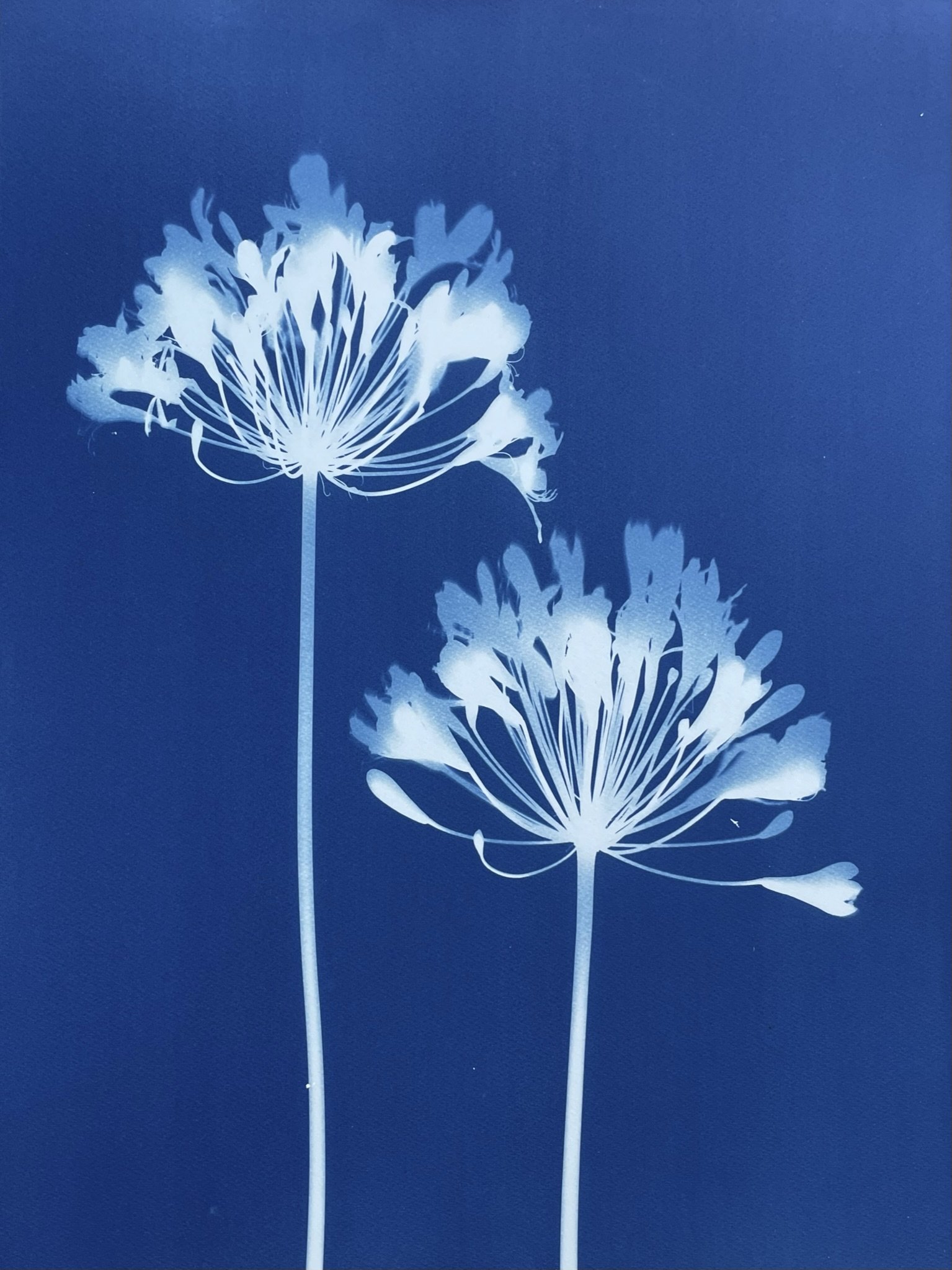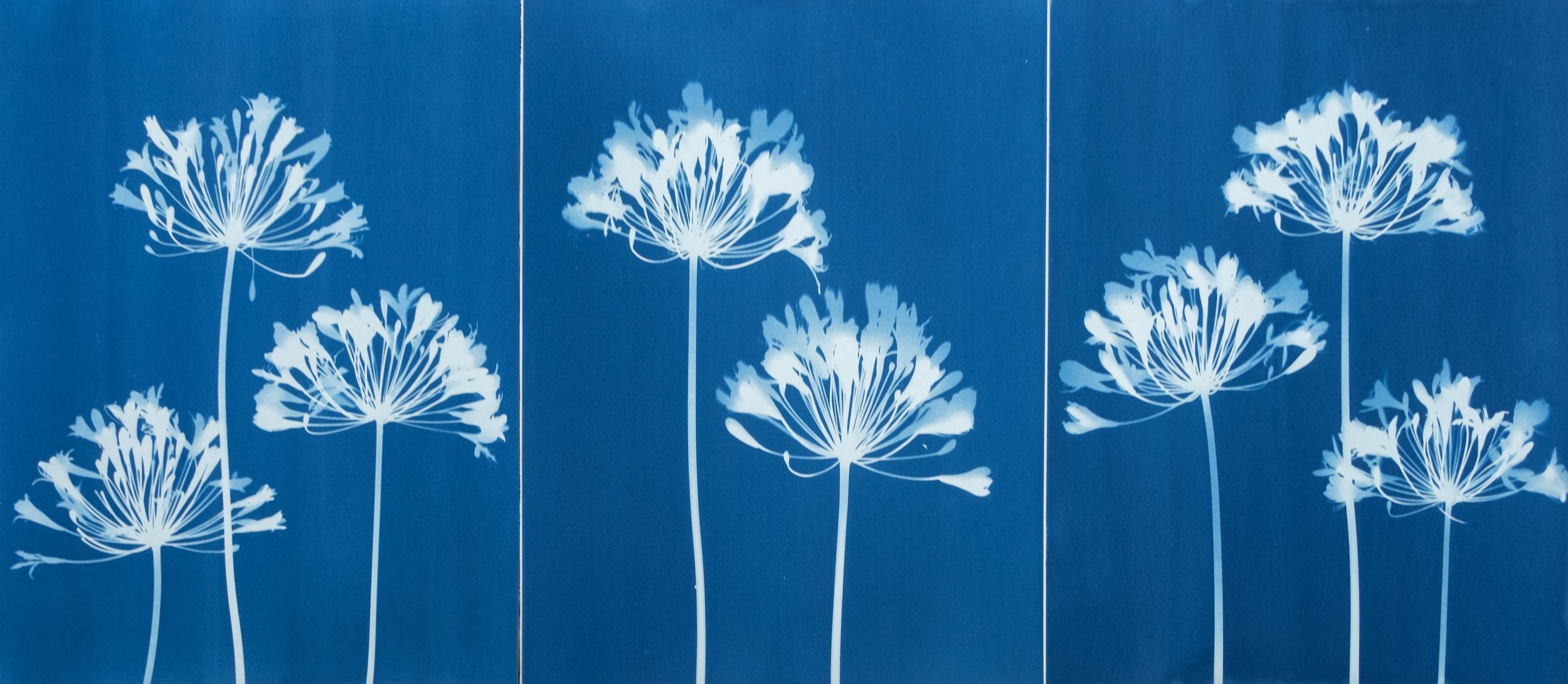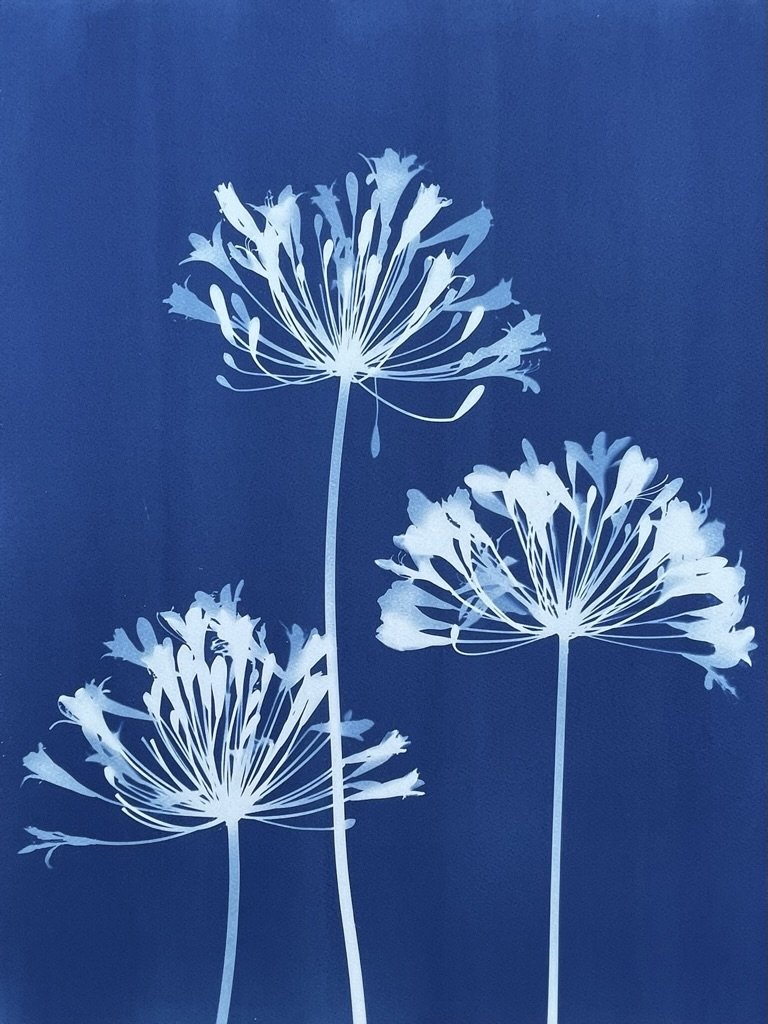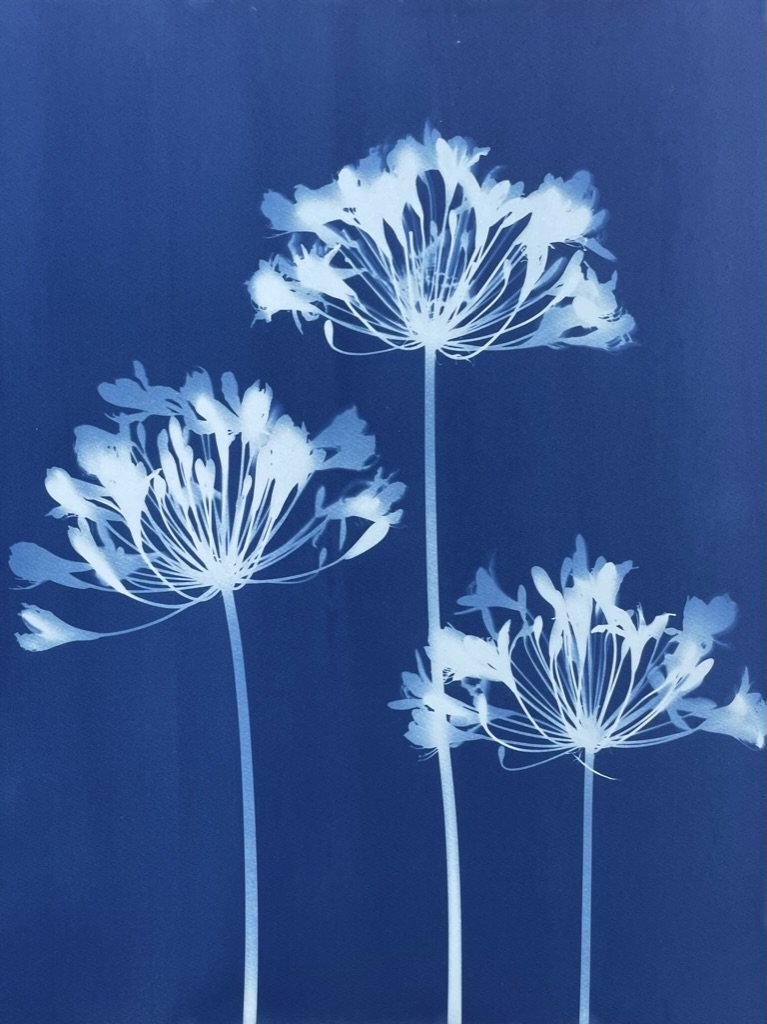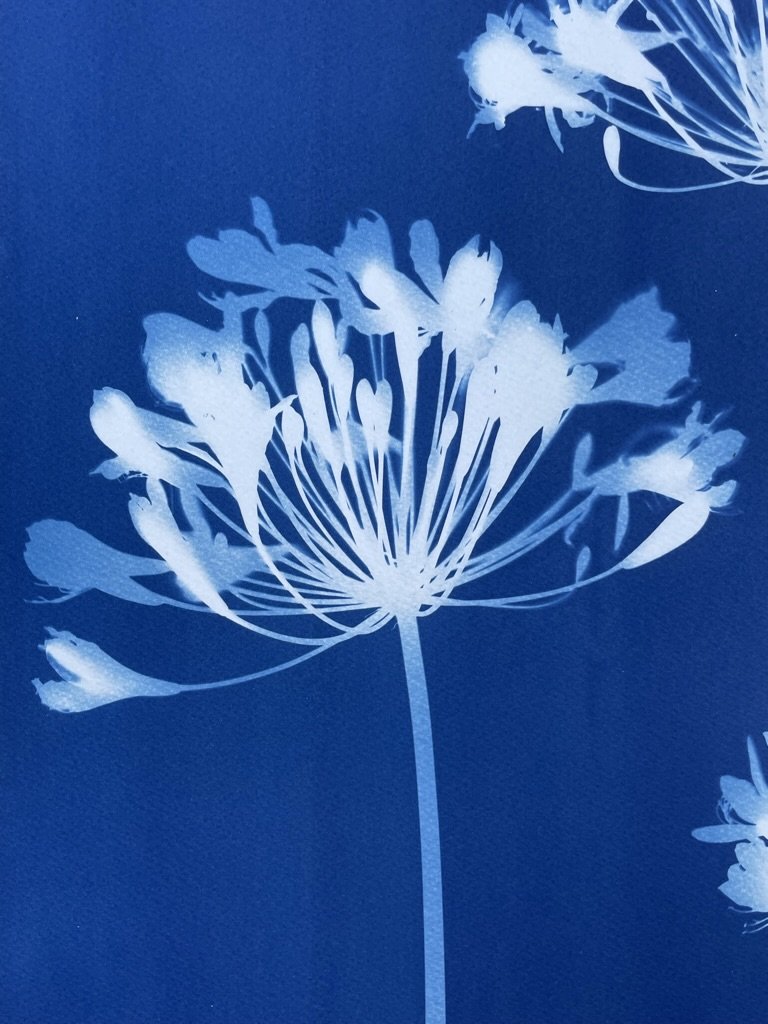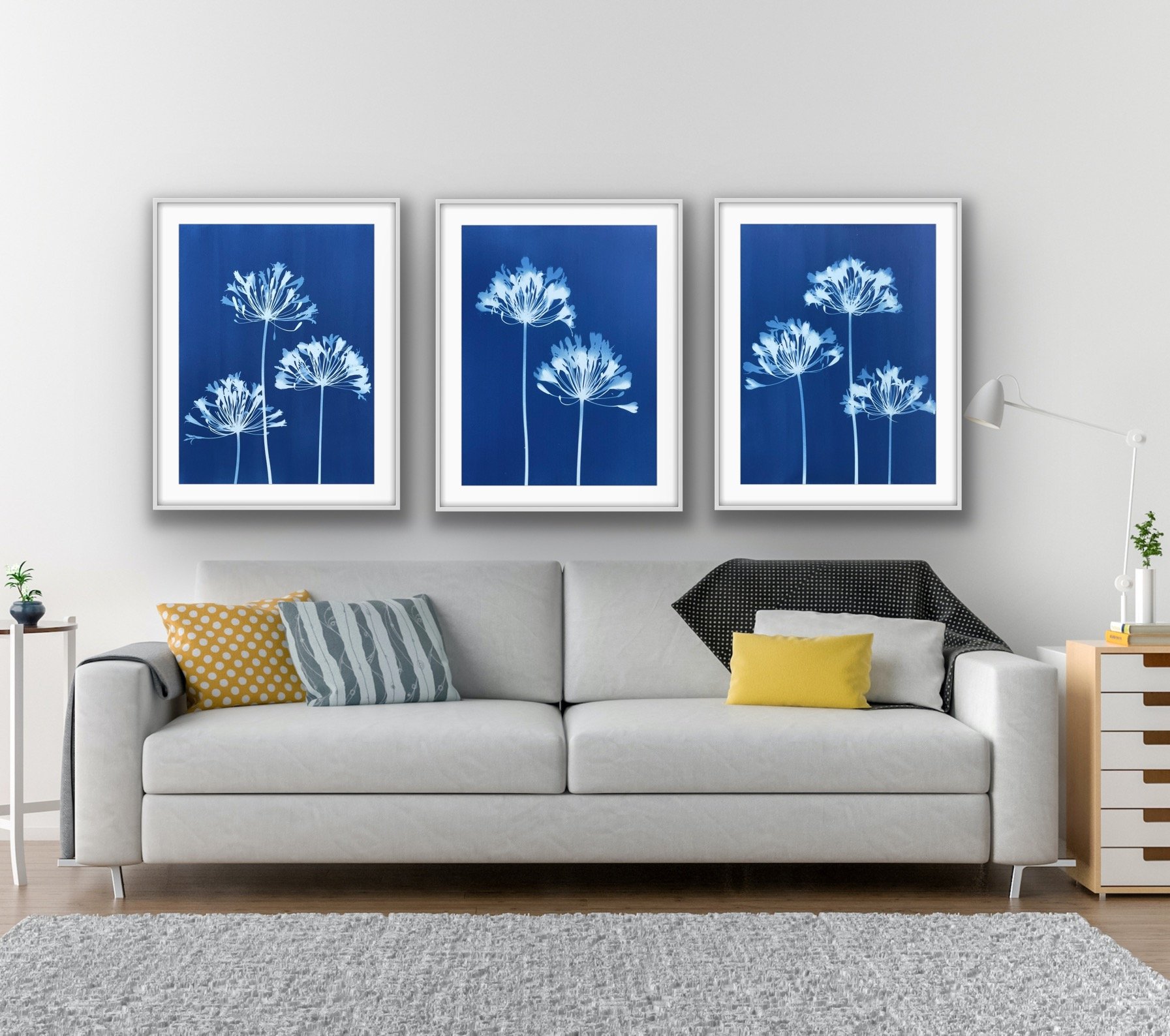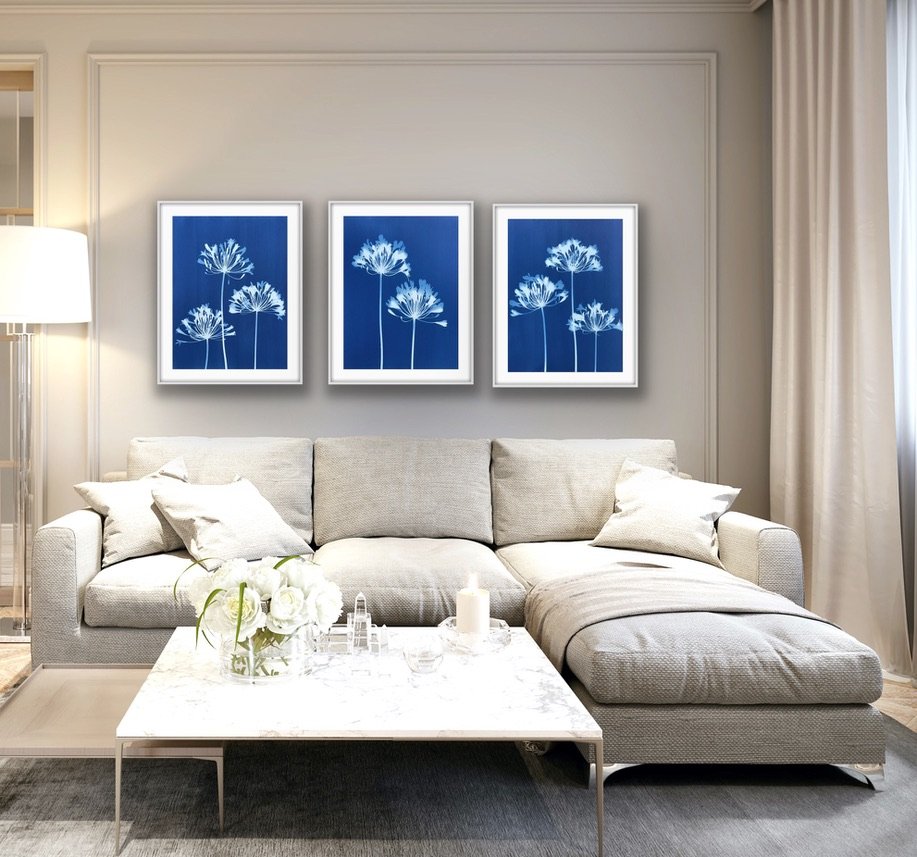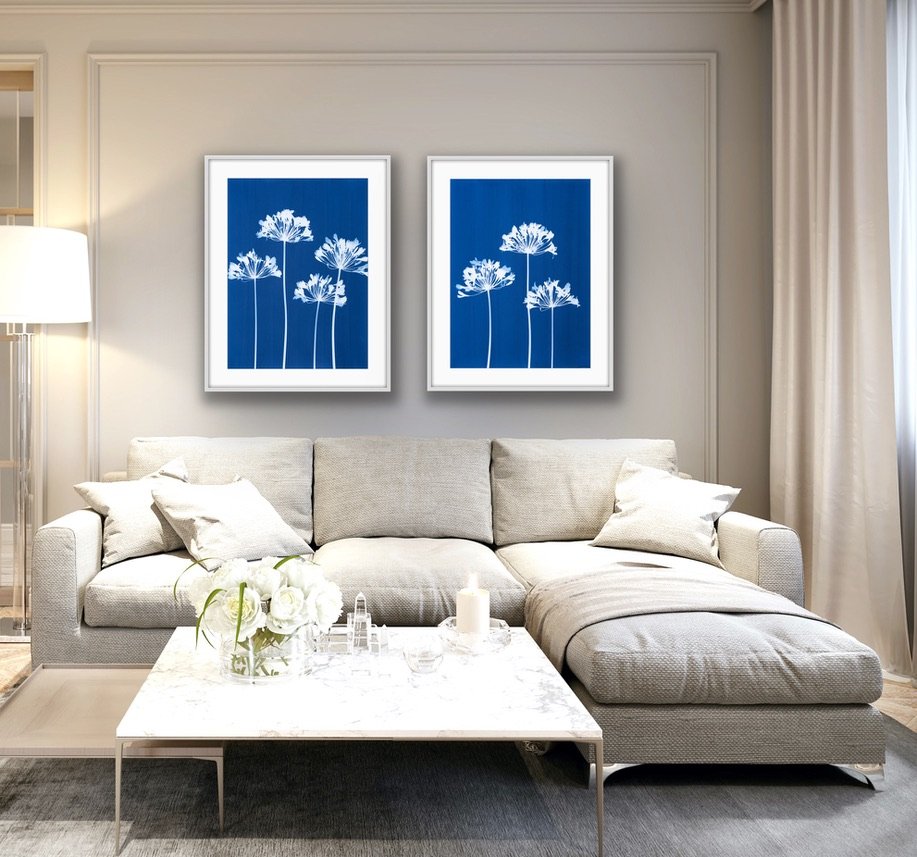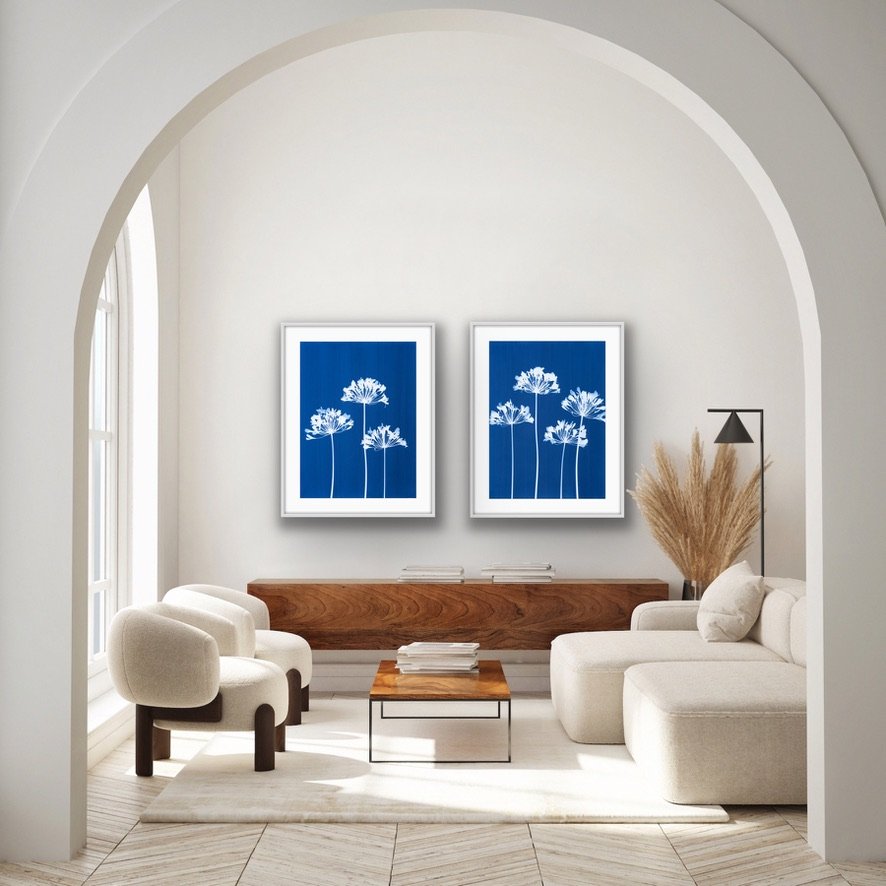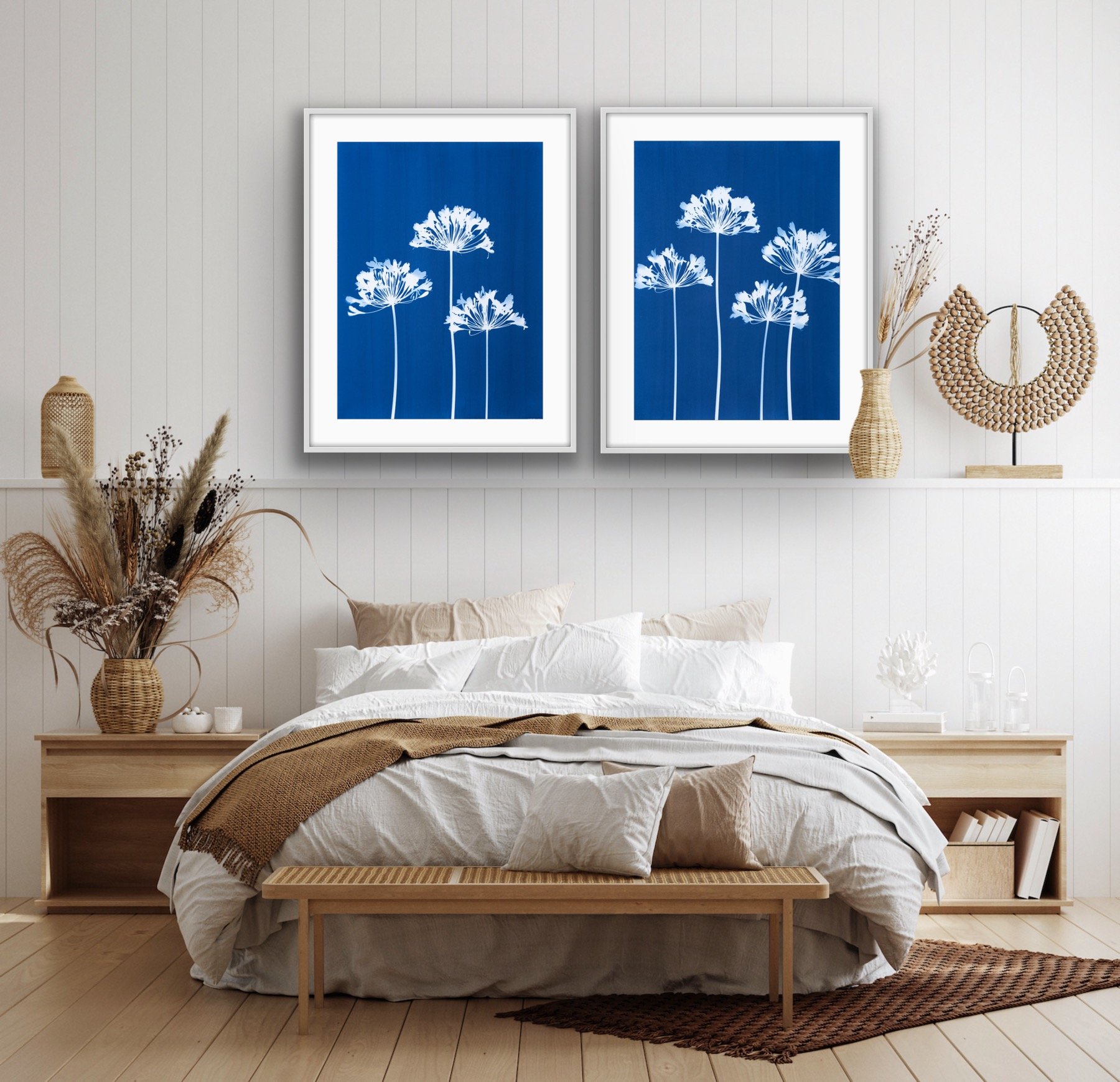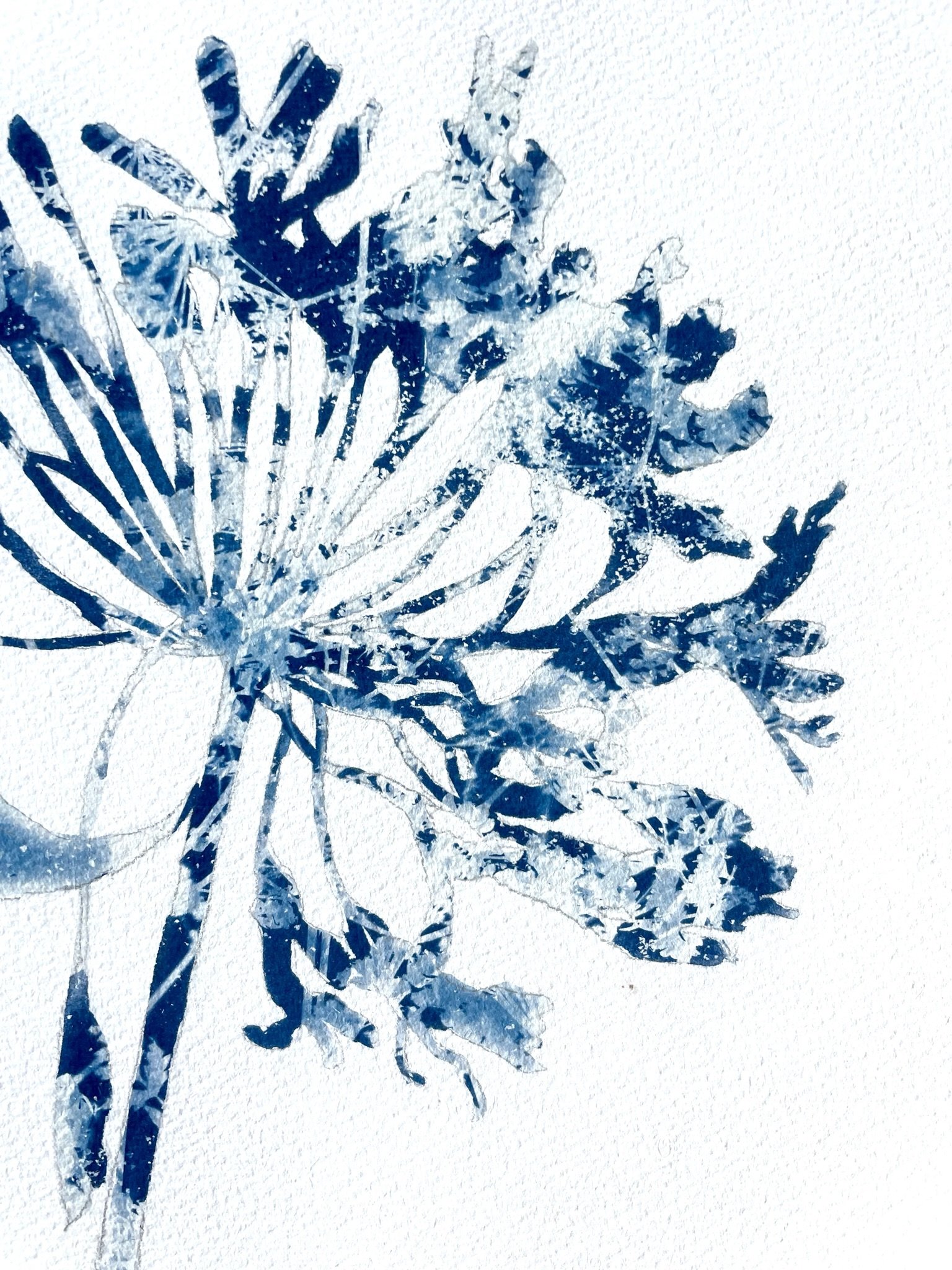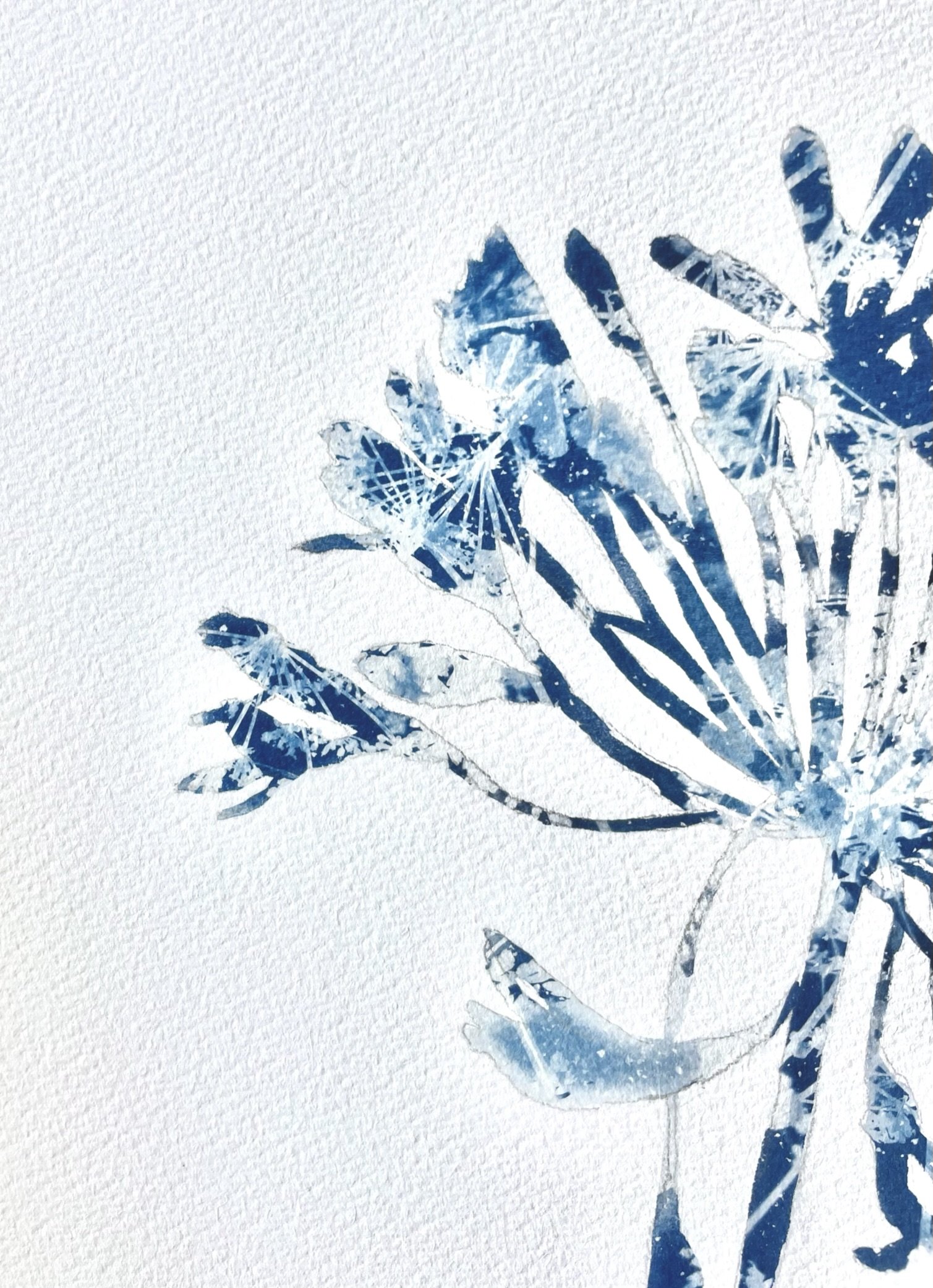 Image 1 of 8
Image 1 of 8

 Image 2 of 8
Image 2 of 8

 Image 3 of 8
Image 3 of 8

 Image 4 of 8
Image 4 of 8

 Image 5 of 8
Image 5 of 8

 Image 6 of 8
Image 6 of 8

 Image 7 of 8
Image 7 of 8

 Image 8 of 8
Image 8 of 8









Three Agapanthus 2 (24 x 18 inches Original Botanical Cyanotype, Unframed)
18 × 24” can be matted and framed in a standard 24 × 30” frame with a 3” wide mat border all around.
Though this looks like a screen print, block print or aquatint etching, it is technically not a form of printmaking but rather a form of camera-less photography. Cyanotypes are a 19th century form of lensless photography also known as photograms, blueprints and sun prints. They resemble block prints or etchings but use no ink nor printing press. Light “etches” the image onto light-sensitive paper.
Traditional single-exposure cyanotype prints are a solid dark blue with a crisp white silhouette. My cyanotypes of varying shades of blue are triple-exposure and sometimes quadruple-exposure cyanotypes. Plant cuttings are arranged on paper previously coated with light-sensitive chemicals and then rearranged in different locations on the same paper, taking it in and out of sunlight, and then re-exposing the paper to light multiple times, creating ghostly overlapping images. The effect is like moonlight or sunlight through leaves.
My botanical cyanotypes are each one-of-a-kind slow camera-less photographs made outdoors using natural light and no film negative. There is no lens, no etched plate, no ink or printing press. There is no way to reproduce exactly the same print even if the same plant cuttings are kept and used in a series before they wilt. As much time is spent planning the exact composition and carefully timing the separate exposures as in the final exposure and the rinse.
The exact same size as the print of a similar name, “Three Agapanthus.” Made with the same three flowers picked from my garden.
18 × 24” can be matted and framed in a standard 24 × 30” frame with a 3” wide mat border all around.
Though this looks like a screen print, block print or aquatint etching, it is technically not a form of printmaking but rather a form of camera-less photography. Cyanotypes are a 19th century form of lensless photography also known as photograms, blueprints and sun prints. They resemble block prints or etchings but use no ink nor printing press. Light “etches” the image onto light-sensitive paper.
Traditional single-exposure cyanotype prints are a solid dark blue with a crisp white silhouette. My cyanotypes of varying shades of blue are triple-exposure and sometimes quadruple-exposure cyanotypes. Plant cuttings are arranged on paper previously coated with light-sensitive chemicals and then rearranged in different locations on the same paper, taking it in and out of sunlight, and then re-exposing the paper to light multiple times, creating ghostly overlapping images. The effect is like moonlight or sunlight through leaves.
My botanical cyanotypes are each one-of-a-kind slow camera-less photographs made outdoors using natural light and no film negative. There is no lens, no etched plate, no ink or printing press. There is no way to reproduce exactly the same print even if the same plant cuttings are kept and used in a series before they wilt. As much time is spent planning the exact composition and carefully timing the separate exposures as in the final exposure and the rinse.
The exact same size as the print of a similar name, “Three Agapanthus.” Made with the same three flowers picked from my garden.
